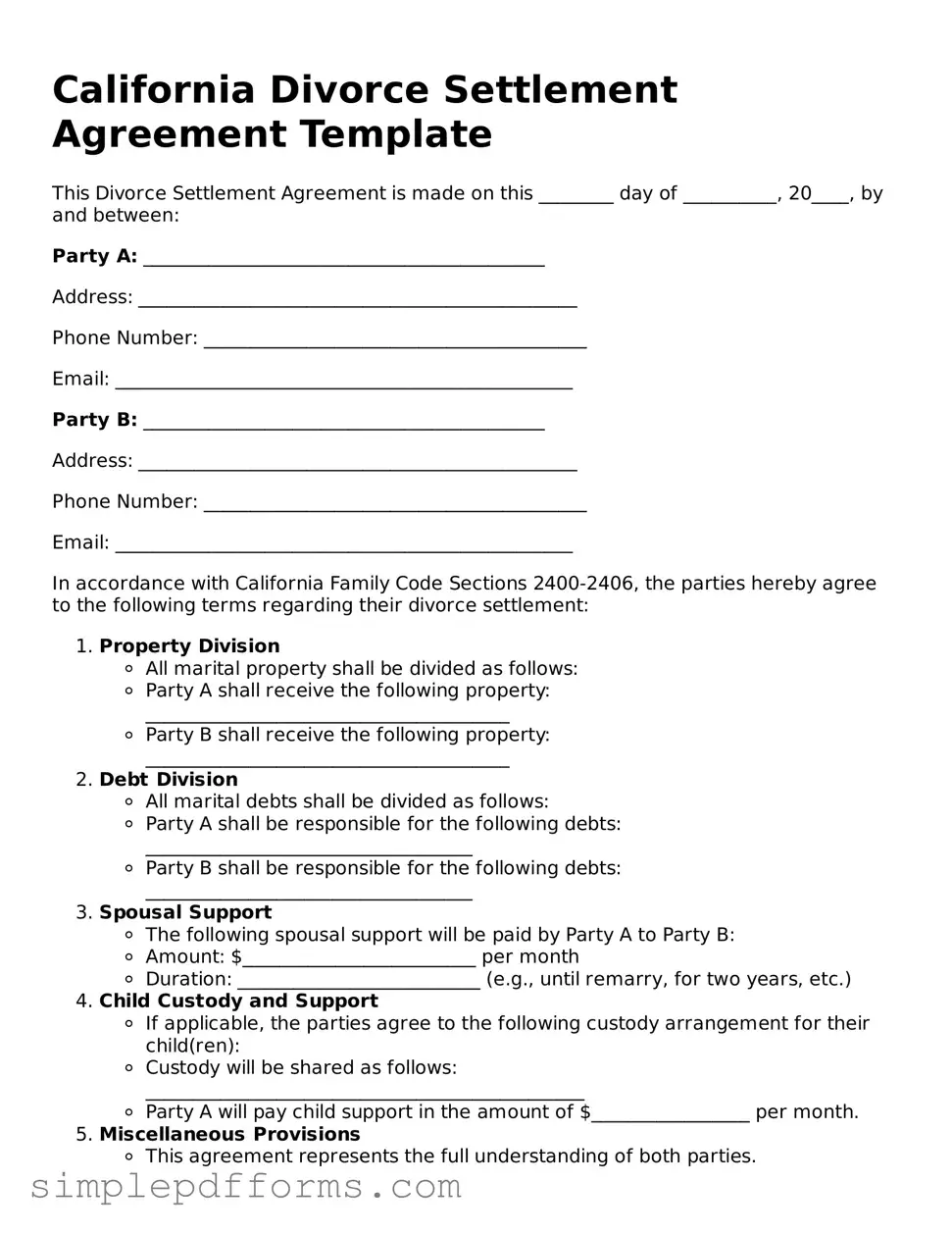California Divorce Settlement Agreement Template
This Divorce Settlement Agreement is made on this ________ day of __________, 20____, by and between:
Party A: ___________________________________________
Address: _______________________________________________
Phone Number: _________________________________________
Email: _________________________________________________
Party B: ___________________________________________
Address: _______________________________________________
Phone Number: _________________________________________
Email: _________________________________________________
In accordance with California Family Code Sections 2400-2406, the parties hereby agree to the following terms regarding their divorce settlement:
- Property Division
- All marital property shall be divided as follows:
- Party A shall receive the following property: _______________________________________
- Party B shall receive the following property: _______________________________________
- Debt Division
- All marital debts shall be divided as follows:
- Party A shall be responsible for the following debts: ___________________________________
- Party B shall be responsible for the following debts: ___________________________________
- Spousal Support
- The following spousal support will be paid by Party A to Party B:
- Amount: $_________________________ per month
- Duration: __________________________ (e.g., until remarry, for two years, etc.)
- Child Custody and Support
- If applicable, the parties agree to the following custody arrangement for their child(ren):
- Custody will be shared as follows: _______________________________________________
- Party A will pay child support in the amount of $_________________ per month.
- Miscellaneous Provisions
- This agreement represents the full understanding of both parties.
- Any amendments to this agreement must be made in writing and signed by both parties.
- Both parties acknowledge understanding and agreeing to this settlement.
Agreed upon and executed on the date first above written.
_____________________________ Party A Signature
_____________________________ Party B Signature
_____________________________ Witness Signature
_____________________________ Date
